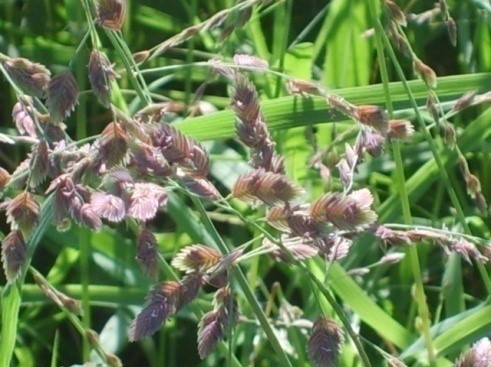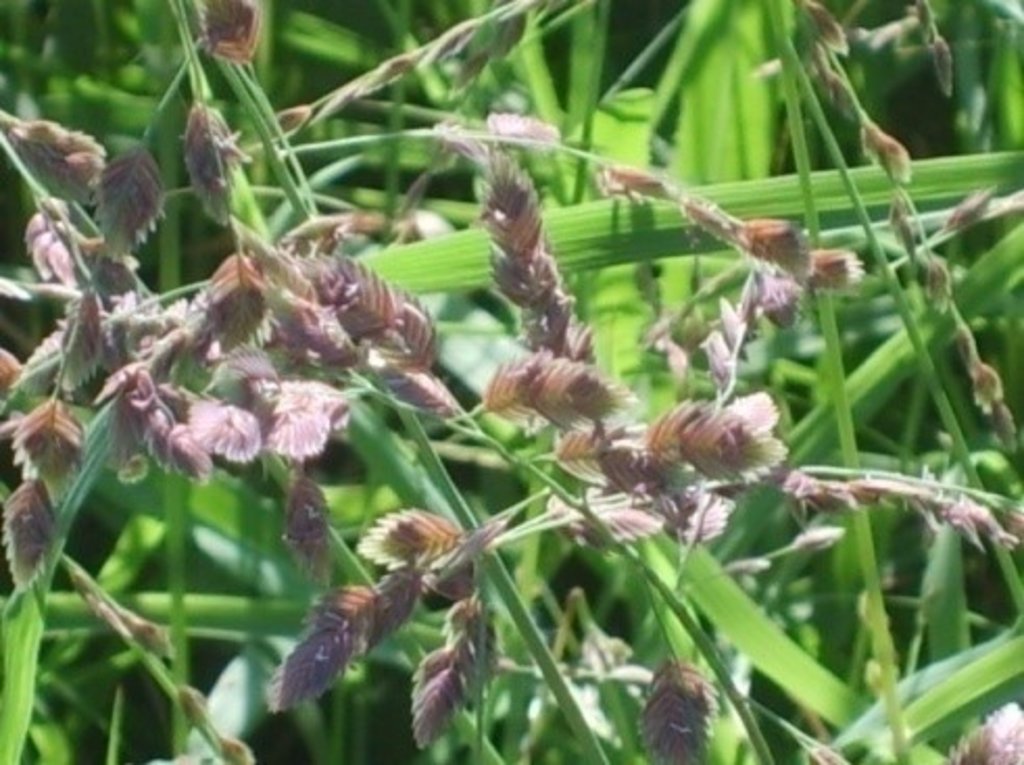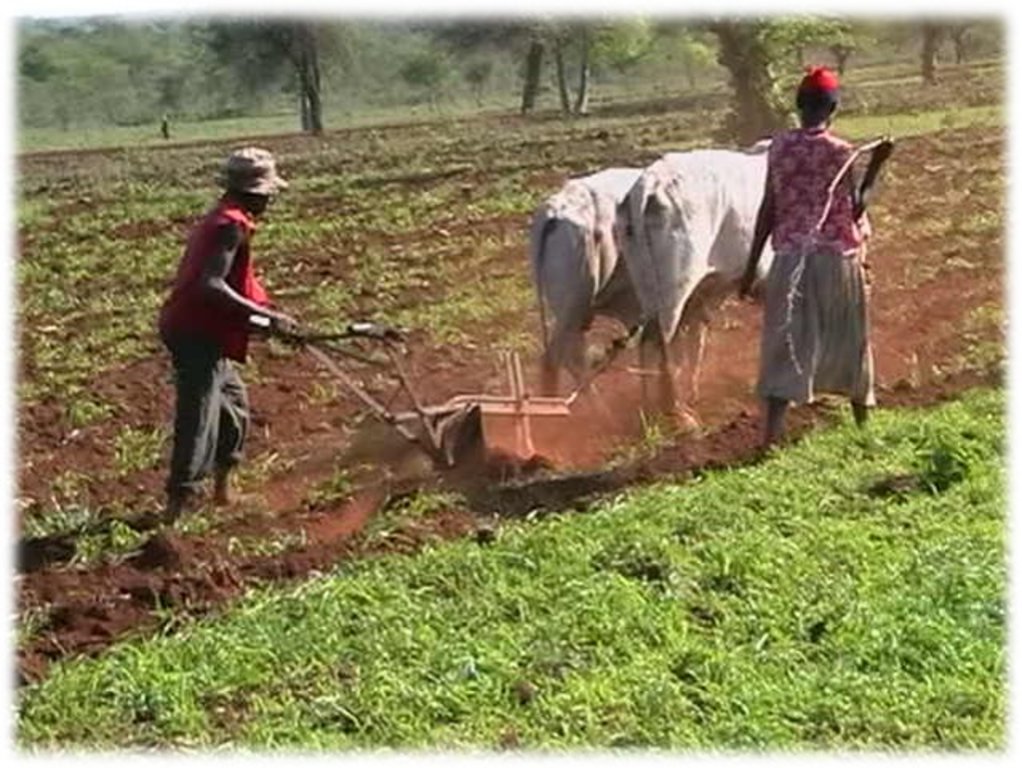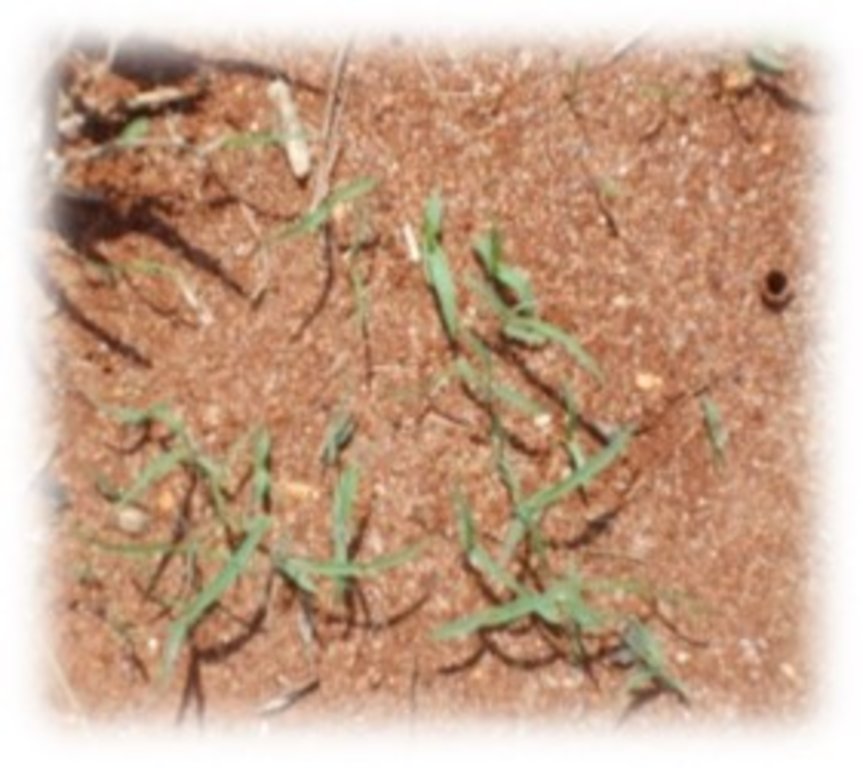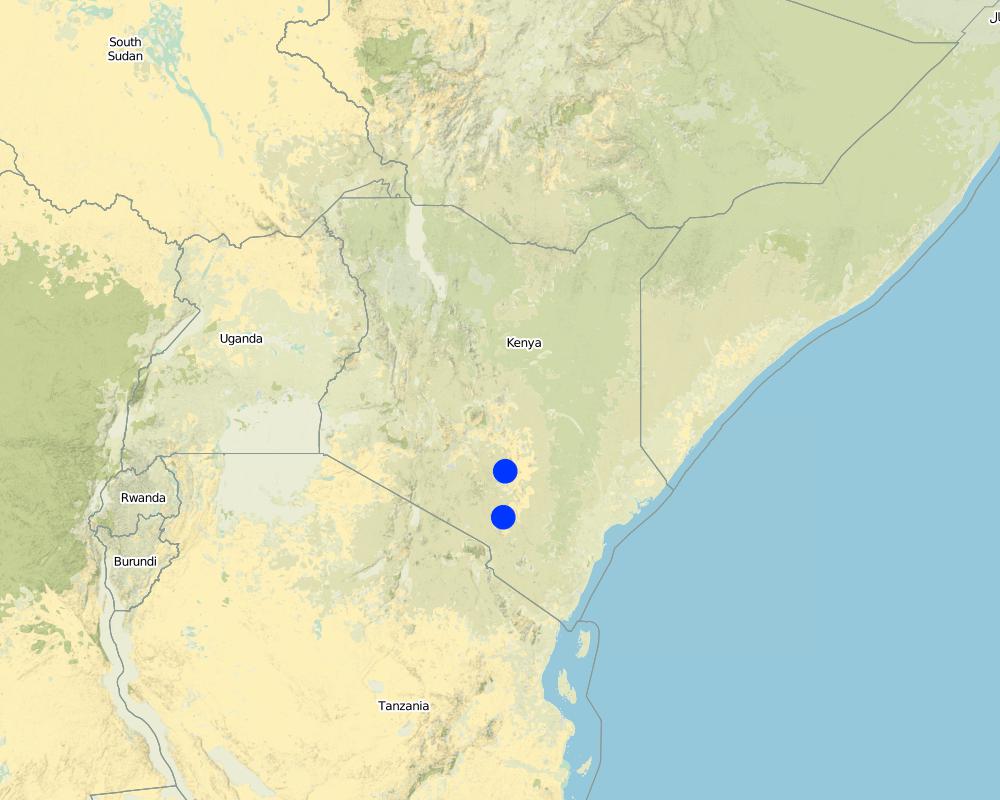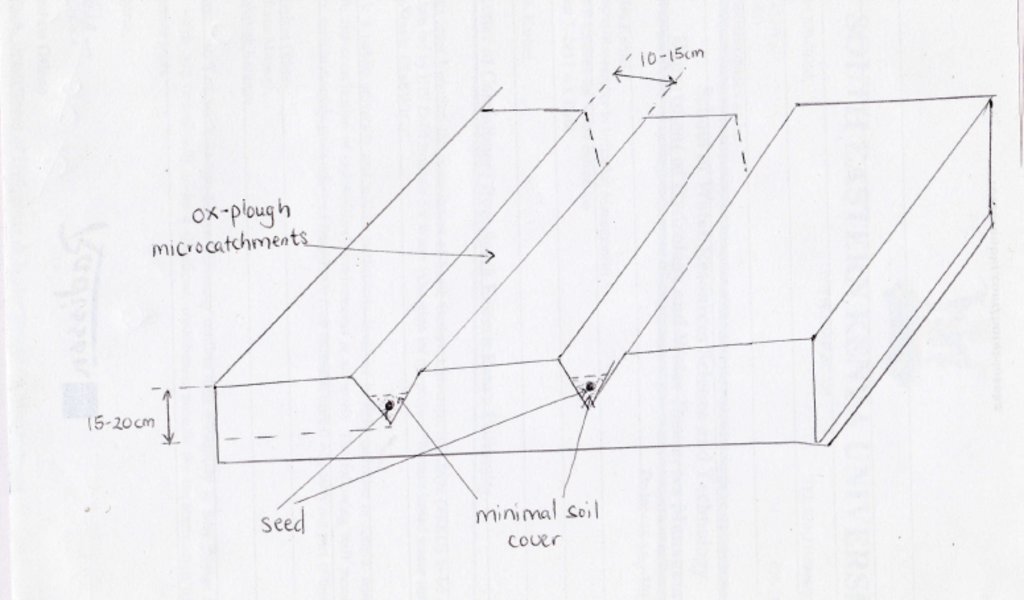Grass reseeding [เคนยา]
- ผู้สร้างสรรค์:
- การอัพเดท:
- ผู้รวบรวม: Kevin Mganga
- ผู้เรียบเรียง: –
- ผู้ตรวจสอบ: Donia Mühlematter, Rima Mekdaschi Studer, Alexandra Gavilano
Reseeding
technologies_2288 - เคนยา
ดูส่วนย่อย
ขยายทั้งหมด ย่อทั้งหมด1. ข้อมูลทั่วไป
1.2 รายละเอียดที่ติดต่อได้ของผู้รวบรวมและองค์กรที่เกี่ยวข้องในการประเมินและการจัดเตรียมทำเอกสารของเทคโนโลยี
ชื่อของโครงการซึ่งอำนวยความสะดวกในการทำเอกสารหรือการประเมินเทคโนโลยี (ถ้าเกี่ยวข้อง)
Book project: Guidelines to Rangeland Management in Sub-Saharan Africa (Rangeland Management)ชื่อขององค์กรซึ่งอำนวยความสะดวกในการทำเอกสารหรือการประเมินเทคโนโลยี (ถ้าเกี่ยวข้อง)
Department of Range and Wildlife Sciences, South Eastern Kenya University (SEKU) - เคนยา1.3 เงื่อนไขการใช้ข้อมูลที่ได้บันทึกผ่านทาง WOCAT
ผู้รวบรวมและวิทยากรหลักยอมรับเงื่อนไขเกี่ยวกับการใช้ข้อมูลที่ถูกบันทึกผ่านทาง WOCAT:
ใช่
1.4 การเปิดเผยเรื่องความยั่งยืนของเทคโนโลยีที่ได้อธิบายไว้
เทคโนโลยีที่ได้อธิบายไว้นี้เป็นปัญหาของความเสื่อมโทรมโทรมของที่ดินหรือไม่ จึงไม่ได้รับการยอมรับว่าเป็นเทคโนโลยีเพื่อการจัดการที่ดินอย่างยั่งยืน:
ไม่ใช่
1.5 Reference to Questionnaire(s) on SLM Approaches (documented using WOCAT)
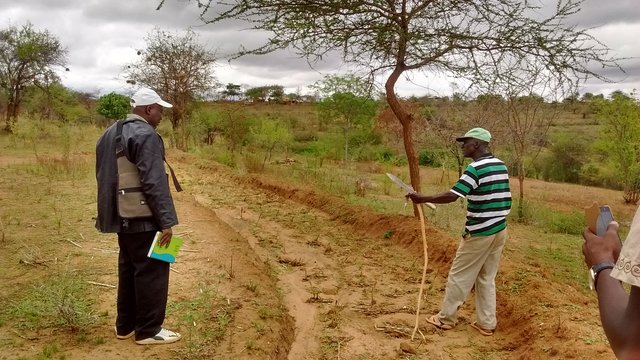
On-farm indigenous pasture establishment demonstrations [เคนยา]
On-farm indigenous pasture establishment demonstrations offer a practical approach to encourage adoption in the arid and semi-arid environments in Kenya.
- ผู้รวบรวม: Kevin Mganga
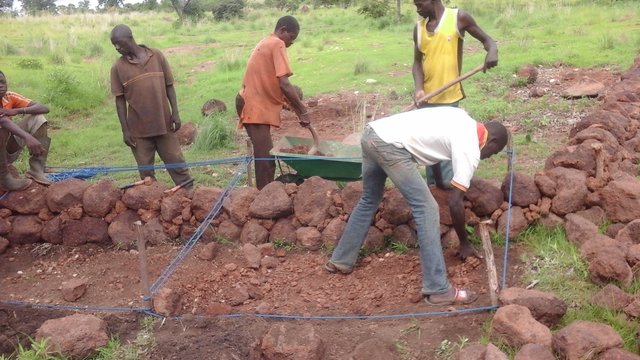
Projet lutte contre l‘erosion, recuperation et mise en … [บูร์กินาฟาโซ]
Une approche intégrée et multipartite au Sud Ouest du Burkina Faso, basée sur l’aménagement des bassins versants et sur la gestion durable des terres avec un fort accent sur la participation locale. Elle réalise des mesures physiques et biologiques de lutte contre l’érosion, d’adaptation au changement climatique et exécute des …
- ผู้รวบรวม: Rebecka Ridder
2. การอธิบายลักษณะของเทคโนโลยี SLM
2.1 การอธิบายแบบสั้น ๆ ของเทคโนโลยี
คำจำกัดความของเทคโนโลยี:
Grass reseeding is a sustainable land management practice aimed at rehabilitating degraded pastures and providing livestock feed. This is mainly carried out with indigenous perennial grass species.
2.2 การอธิบายแบบละเอียดของเทคโนโลยี
คำอธิบาย:
Grass reseeding is a sustainable land management practice especially appropriate for pastoral and agro-pastoral communities inhabiting the arid and semi-arid rangelands of the world. Seedbed preparation involves clearing of invasive bush patches and creation of furrows across the slope using an ox-plough (traditional) or shallow and light ploughing using a tractor (modern). Grass seeds are sown along the furrows which are created directly in the degraded grazing land. The seeds are lightly covered with soil because the indigenous grass seeds are very small. This encourages faster emergence of grass seedlings. The slope should be generally flat or very gentle (<5%) to reduce the speed of runoff, thus prevent soil erosion and consequently the washing away of the grass seeds. Eroded and deposited seeds will eventually lead to uneven establishment of pasture, mainly concentrated downslope. Minimal soil disturbance by ox-plough or tractor facilitates root penetration of the seedlings and also helps breaking the soil surface hardpan formed by continuous hoof action.
Furrows constitute a form of in-situ moisture conservation, capturing rainwater where it falls, thus increasing availability of water for emerging seedlings. The main purpose of this technology is to rehabilitate degraded natural pastures and provide a continuous source of livestock feed especially during lean periods. Use of indigenous grass species e.g. Eragrostis superba, Cenchrus ciliaris, Enteropogon macrostachyus and Chloris roxburghiana is advocated for better establishment and subsequent development. Ecological impacts of this technology include improved soil cover and reduced soil erosion. In addition to rehabilitating degraded natural pastures and improving quality and quantity for livestock production, grass reseeding has additional socio-economic impacts, thus benefiting rural livelihoods. This is through the sale of hay and grass seed and surplus milk in the local market, which provide supplementary sources of income.
2.3 รูปภาพของเทคโนโลยี
2.5 ประเทศภูมิภาค หรือสถานที่ตั้งที่เทคโนโลยีได้นำไปใช้และได้รับการครอบคลุมโดยการประเมินนี้
ประเทศ:
เคนยา
ภูมิภาค/รัฐ/จังหวัด:
Eastern
ข้อมูลจำเพาะเพิ่มเติมของสถานที่ตั้ง :
Kibwezi
ระบุการกระจายตัวของเทคโนโลยี:
- ใช้ ณ จุดที่เฉพาะเจาะจงหรือเน้นไปยังบริเวณพื้นที่ขนาดเล็ก
แสดงความคิดเห็น:
Arid and Semi-Arid Lands (ASALS) in Kenya.
Practiced among several agropastoral and pastoral households in the arid and semi-arid lands
Map
×2.6 วันที่การดำเนินการ
ถ้าไม่รู้ปีที่แน่นอน ให้ระบุวันที่โดยประมาณ:
- 10-50 ปี
2.7 คำแนะนำของเทคโนโลยี
ให้ระบุว่าเทคโนโลยีถูกแนะนำเข้ามาอย่างไร:
- ในช่วงการทดลองหรือการทำวิจัย
3. การจัดประเภทของเทคโนโลยี SLM
3.1 วัตถุประสงค์หลักของเทคโนโลยี
- ปรับปรุงการผลิตให้ดีขึ้น
- ลด ป้องกัน ฟื้นฟู การเสื่อมโทรมของที่ดิน
- ลดความเสี่ยงของภัยพิบัติ
- ชะลอการเปลี่ยนแปลงภูมิอากาศของโลกและผลกระทบ
3.2 ประเภทของการใช้ที่ดินในปัจจุบันที่ได้นำเทคโนโลยีไปใช้

พื้นที่ปลูกพืช
- การปลูกพืชล้มลุกอายุปีเดียว
Annual cropping - Specify crops:
- fodder crops - grasses

ทุ่งหญ้าเลี้ยงสัตว์
Extensive grazing:
- การเลี้ยงสัตว์แบบเร่ร่อนไปตามที่ต่าง ๆ (Nomadism)
- กึ่งโนแมนดิซึ่มหรือแพสโตแรลลิซึ่ม (Semi-nomadism/pastoralism)
- การทำฟาร์มปศุสัตว์ (Ranching)
Animal type:
- goats
- sheep
- cattle
แสดงความคิดเห็น:
Use of indigenous grass species e.g. Eragrostis superba, Cenchrus ciliaris, Enteropogon macrostachyus and Chloris roxburghiana is recommended
Number of growing seasons per year: 2
Bimodal rainfall pattern (March-May) and (October-December).
Livestock density: On average 2-3 cattle, 7-8 goats, 2 sheep per household
3.4 การใช้น้ำ
การใช้น้ำของที่ดินที่มีการใช้เทคโนโลยีอยู่:
- จากน้ำฝน
3.5 กลุ่ม SLM ที่ตรงกับเทคโนโลยีนี้
- การจัดการปศุสัตว์และทุ่งหญ้าเลี้ยงสัตว์
- การรบกวนดินให้น้อยที่สุด
- การเก็บเกี่ยวน้ำ
3.6 มาตรการ SLM ที่ประกอบกันเป็นเทคโนโลยี

มาตรการอนุรักษ์ด้วยวิธีพืช
- V2: หญ้าและไม้ยืนต้น

มาตรการอนุรักษ์ด้วยโครงสร้าง
- S4: คูน้ำแนวระดับ หลุม
3.7 รูปแบบหลักของการเสื่อมโทรมของที่ดินที่ได้รับการแก้ไขโดยเทคโนโลยี

การกัดกร่อนของดินโดยน้ำ
- Wt (Loss of topsoil): การสูญเสียดินชั้นบนหรือการกัดกร่อนที่ผิวดิน

การเสื่อมโทรมของดินทางด้านกายภาพ
- Pc (Compaction): การอัดแน่น
- Pi (Soil sealing)

การเสื่อมโทรมของดินทางด้านชีวภาพ
- Bc (Reduction of vegetation cover): การลดลงของจำนวนพืชที่ปกคลุมดิน
- Bh (Loss of habitat): การสูญเสียแหล่งที่อยู่
- Bq (Quantity/biomass decline): การลดลงของปริมาณหรือมวลชีวภาพ
- Bs (Quality and species composition): องค์ประกอบหรือความหลากหลายทางคุณภาพและชนิดพันธุ์ลดลง
3.8 การป้องกัน การลดลง หรือการฟื้นฟูความเสื่อมโทรมของที่ดิน
ระบุเป้าหมายของเทคโนโลยีกับความเสื่อมโทรมของที่ดิน:
- ลดความเสื่อมโทรมของดิน
- ฟื้นฟูบำบัดที่ดินที่เสื่อมโทรมลงอย่างมาก
4. ข้อมูลจำเพาะด้านเทคนิค กิจกรรมการนำไปปฏิบัติใช้ ปัจจัยนำเข้า และค่าใช้จ่าย
4.1 แบบแปลนทางเทคนิคของเทคโนโลยี
ข้อมูลจำเพาะด้านเทคนิค (แบบแปลนทางเทคนิคของเทคโนโลยี):
15-20 cm deep and 10-15 cm wide furrows across the slope. Spacing between furrows is 15-20 cm and depends mostly on plant species. Seeds are sown along the furrows intentionally built to capture and hold rainwater. Flat or very gentle (<5%) slope to reduce runoff.
ผู้เขียน:
Kevin Mganga
วันที่:
18/05/2017
4.2 ข้อมูลทั่วไปเกี่ยวกับการคำนวณปัจจัยนำเข้าและค่าใช้จ่าย
ให้ระบุว่าค่าใช้จ่ายและปัจจัยนำเข้าได้รับการคำนวณอย่างไร:
- ต่อพื้นที่ที่ใช้เทคโนโลยี
ระบุขนาดและหน่วยพื้นที่:
Hectare
ระบุสกุลเงินที่ใช้คำนวณค่าใช้จ่าย:
- USD
ระบุค่าเฉลี่ยของค่าจ้างในการจ้างแรงงานต่อวัน:
5
4.3 กิจกรรมเพื่อการจัดตั้ง
| กิจกรรม | Timing (season) | |
|---|---|---|
| 1. | Creation of furrow micro-catchments with ox-plough | Before onset of the rains |
| 2. | Sowing (seed placement and covering with soil) | Before onset of the rains |
| 3. | Gapping (reseeding gaps with poor establishment and cover) | After establishment |
4.4 ค่าใช้จ่ายของปัจจัยนำเข้าที่จำเป็นสำหรับการจัดตั้ง
| ปัจจัยนำเข้า | หน่วย | ปริมาณ | ค่าใช้จ่ายต่อหน่วย | ค่าใช้จ่ายทั้งหมดต่อปัจจัยนำเข้า | %ของค่าใช้จ่ายที่ก่อให้เกิดขึ้นโดยผู้ใช้ที่ดิน | |
|---|---|---|---|---|---|---|
| แรงงาน | Casual and Household labour | person-days | 4.0 | 5.0 | 20.0 | 100.0 |
| อุปกรณ์ | Hiring ox-driven plough | person-days | 4.0 | 100.0 | 400.0 | 100.0 |
| วัสดุด้านพืช | Seeds | kgs | 5.0 | 10.0 | 50.0 | 100.0 |
| ค่าใช้จ่ายทั้งหมดของการจัดตั้งเทคโนโลยี | 470.0 | |||||
| Total costs for establishment of the Technology in USD | 470.0 | |||||
4.5 การบำรุงรักษาสภาพหรือกิจกรรมที่เกิดขึ้นเป็นประจำ
| กิจกรรม | ช่วงระยะเวลา/ความถี่ | |
|---|---|---|
| 1. | Gapping (i.e. reseeding bare areas (patches) with poor germination and cover) | Seasonal |
แสดงความคิดเห็น:
Gapping is done to ensure uniform plant cover
4.6 ค่าใช้จ่ายของปัจจัยนำเข้าและกิจกรรมที่เกิดขึ้นเป็นประจำที่ต้องการการบำรุงรักษา (ต่อปี)
| ปัจจัยนำเข้า | หน่วย | ปริมาณ | ค่าใช้จ่ายต่อหน่วย | ค่าใช้จ่ายทั้งหมดต่อปัจจัยนำเข้า | %ของค่าใช้จ่ายที่ก่อให้เกิดขึ้นโดยผู้ใช้ที่ดิน | |
|---|---|---|---|---|---|---|
| แรงงาน | Casual and household labour | person-days | 1.0 | 5.0 | 5.0 | 100.0 |
| อุปกรณ์ | Ox-driven plough | person-days | 1.0 | 100.0 | 100.0 | 100.0 |
| วัสดุด้านพืช | Seed | kg | 1.0 | 10.0 | 10.0 | 100.0 |
| ค่าใช้จ่ายทั้งหมดของการบำรุงรักษาสภาพเทคโนโลยี | 115.0 | |||||
| Total costs for maintenance of the Technology in USD | 115.0 | |||||
4.7 ปัจจัยสำคัญที่สุดที่มีผลกระทบต่อค่าใช้จ่าย
ปัจจัยสำคัญที่สุดที่มีผลกระทบต่อค่าใช้จ่ายต่างๆ:
Seed availability in the 'informal markets' i.e. between farmers and farmer groups, research organisation, influences the cost of grass seed. This is mainly determined by the preceding rainy season.
5. สิ่งแวดล้อมทางธรรมชาติและของมนุษย์
5.1 ภูมิอากาศ
ฝนประจำปี
- < 250 ม.ม.
- 251-500 ม.ม.
- 501-750 ม.ม.
- 751-1,000 ม.ม.
- 1,001-1,500 ม.ม.
- 1,501-2,000 ม.ม.
- 2,001-3,000 ม.ม.
- 3,001-4,000 ม.ม.
- > 4,000 ม.ม.
ระบุปริมาณน้ำฝนเฉลี่ยรายปี (ถ้ารู้) :หน่วย ม.ม.
700.00
ข้อมูลจำเพาะ/ความคิดเห็นเรื่องปริมาณน้ำฝน:
Highly variable in space, time and season.
ระบุชื่อของสถานีตรวดวัดอากาศที่ใช้อ้างอิงคือ:
Meteorological Station - South Eastern Kenya University
เขตภูมิอากาศเกษตร
- กึ่งแห้งแล้ง
5.2 สภาพภูมิประเทศ
ค่าเฉลี่ยความลาดชัน:
- ราบเรียบ (0-2%)
- ลาดที่ไม่ชัน (3-5%)
- ปานกลาง (6-10%)
- เป็นลูกคลื่น (11-15%)
- เป็นเนิน (16-30%)
- ชัน (31-60%)
- ชันมาก (>60%)
ธรณีสัณฐาน:
- ที่ราบสูง/ที่ราบ
- สันเขา
- ไหล่เขา
- ไหล่เนินเขา
- ตีนเนิน
- หุบเขา
ระดับความสูง:
- 0-100 เมตร
- 101-500 เมตร
- 501-1,000 เมตร
- 1,001-1,500 เมตร
- 1,501-2,000 เมตร
- 2,001-2,500 เมตร
- 2,501-3,000 เมตร
- 3,001-4,000 เมตร
- > 4,000 เมตร
ให้ระบุถ้าเทคโนโลยีได้ถูกนำไปใช้:
- บริเวณสันเขา (convex situations)
ความคิดเห็นและข้อมูลจำเพาะเพิ่มเติมเรื่องสภาพภูมิประเทศ:
Altitude 900 m above sea level
Slope angle - flat 0-2% and gentle 3-5 % slopes
5.3 ดิน
ค่าเฉลี่ยความลึกของดิน:
- ตื้นมาก (0-20 ซ.ม.)
- ตื้น (21-50 ซ.ม.)
- ลึกปานกลาง (51-80 ซ.ม.)
- ลึก (81-120 ซ.ม.)
- ลึกมาก (>120 ซ.ม.)
เนื้อดิน (ดินชั้นบน):
- หยาบ/เบา (ดินทราย)
- ปานกลาง (ดินร่วน ทรายแป้ง)
เนื้อดินล่าง (> 20 ซ.ม.ต่ำจากผิวดิน):
- หยาบ/เบา (ดินทราย)
- ปานกลาง (ดินร่วน ทรายแป้ง)
อินทรียวัตถุในดิน:
- ต่ำ (<1%)
5.4 ความเป็นประโยชน์และคุณภาพของน้ำ
ระดับน้ำใต้ดิน:
5-50 เมตร
น้ำไหลบ่าที่ผิวดิน:
ปานกลาง
คุณภาพน้ำ (ที่ยังไม่ได้บำบัด):
เป็นน้ำเพื่อการดื่มที่ไม่ดี (จำเป็นต้องได้รับการบำบัด)
ความเค็มของน้ำเป็นปัญหาหรือไม่:
ไม่ใช่
กำลังเกิดน้ำท่วมในพื้นที่หรือไม่:
ไม่ใช่
ความคิดเห็นและข้อมูลจำเพาะเพิ่มเติมเรื่องคุณภาพและปริมาณน้ำ:
Seasonal flactuation depending on rainfall
5.5 ความหลากหลายทางชีวภาพ
ความหลากหลายทางชนิดพันธุ์:
- ปานกลาง
ความหลากหลายของแหล่งที่อยู่:
- ปานกลาง
ความคิดเห็นและข้อมูลจำเพาะเพิ่มเติมของความหลากหลายทางชีวภาพ:
Due to intensive utilisation of natural pastures, notably due to overgrazing, indigenous pasture species are depleted and replaced by less preferred invasive plant species. However, reseeded pastures reverses this trend by re-introducing various species the indigenous pastures which can naturally co-exist and reduce competition with other herbaceaous plant species, thereby increases biodiversity.
5.6 ลักษณะของผู้ใช้ที่ดินที่นำเทคโนโลยีไปปฏิบัติใช้
อยู่กับที่หรือเร่ร่อน:
- อยู่กับที่
- กึ่งเร่ร่อน
แนวทางการตลาดของระบบการผลิต:
- เพื่อการยังชีพ (หาเลี้ยงตนเอง)
- mixed (subsistence/ commercial)
รายได้ที่มาจากนอกฟาร์ม:
- 10-50% ของรายได้ทั้งหมด
ระดับของความมั่งคั่งโดยเปรียบเทียบ:
- จน
- พอมีพอกิน
เป็นรายบุคคล/ครัวเรือน:
- เป็นรายบุคคล/ครัวเรือน
- กลุ่ม/ชุมชน
ระดับของการใช้เครื่องจักรกล:
- งานที่ใช้แรงกาย
- การใช้กำลังจากสัตว์
เพศ:
- หญิง
- ชาย
อายุของผู้ใช้ที่ดิน:
- ผู้เยาว์
- วัยกลางคน
5.7 Average area of land used by land users applying the Technology
- < 0.5 เฮกตาร์
- 0.5-1 เฮกตาร์
- 1-2 เฮกตาร์
- 2-5 เฮกตาร์
- 5-15 เฮกตาร์
- 15-50 เฮกตาร์
- 50-100 เฮกตาร์
- 100-500 เฮกตาร์
- 500-1,000 เฮกตาร์
- 1,000-10,000 เฮกตาร์
- >10,000 เฮกตาร์
พิจารณาว่าเป็นขนาดเล็ก กลาง หรือขนาดใหญ่ (ซึ่งอ้างอิงถึงบริบทระดับท้องถิ่น):
- ขนาดเล็ก
- ขนาดกลาง
5.8 กรรมสิทธิ์ในที่ดิน สิทธิในการใช้ที่ดินและสิทธิในการใช้น้ำ
กรรมสิทธิ์ในที่ดิน:
- เป็นแบบชุมชนหรือหมู่บ้าน
- รายบุคคล ได้รับสิทธิครอบครอง
สิทธิในการใช้ที่ดิน:
- เกี่ยวกับชุมชน (ถูกจัดระเบียบ)
- รายบุคคล
สิทธิในการใช้น้ำ:
- เกี่ยวกับชุมชน (ถูกจัดระเบียบ)
- รายบุคคล
แสดงความคิดเห็น:
Communal land use right - e.g. common grazing land, reserved and seasonal grazing areas (large scale)
Individual land use right - e.g. individual pasture establishment within individual owned land
Communal water use rights - e.g. watering point, river, lake, stream, community water reservoir, boreholes
Individual water use rights - e.g. individual tap water, roof water catchment
5.9 การเข้าถึงบริการและโครงสร้างพื้นฐาน
สุขภาพ:
- จน
- ปานกลาง
- ดี
การศึกษา:
- จน
- ปานกลาง
- ดี
ความช่วยเหลือทางด้านเทคนิค:
- จน
- ปานกลาง
- ดี
การจ้างงาน (เช่น ภายนอกฟาร์ม):
- จน
- ปานกลาง
- ดี
ตลาด:
- จน
- ปานกลาง
- ดี
พลังงาน:
- จน
- ปานกลาง
- ดี
ถนนและการขนส่ง:
- จน
- ปานกลาง
- ดี
น้ำดื่มและการสุขาภิบาล:
- จน
- ปานกลาง
- ดี
บริการด้านการเงิน:
- จน
- ปานกลาง
- ดี
6. ผลกระทบและสรุปคำบอกกล่าว
6.1 ผลกระทบในพื้นที่ดำเนินการ (On-site) จากการใช้เทคโนโลยี
ผลกระทบทางด้านเศรษฐกิจและสังคม
การผลิต
การผลิตพืชที่ใช้เลี้ยงปศุสัตว์
คุณภาพพืชที่ใช้เลี้ยงปศุสัตว์
รายได้และค่าใช้จ่าย
รายได้จากฟาร์ม
ความหลากหลายของแหล่งผลิตรายได้
ผลกระทบด้านนิเวศวิทยา
ดิน
สิ่งปกคลุมดิน
การสูญเสียดิน
6.2 ผลกระทบนอกพื้นที่ดำเนินการ (Off-site) จากการใช้เทคโนโลยี
ความสามารถต้านทานการเปลี่ยนแปลง / ความสามารถในการคัดกรอง
แสดงความคิดเห็น/ระบุ:
Reseeded areas improve the soil hydrological properties by reducing the impact of raindrops thus reducing soil disturbance and increasing water infiltration capacity. Consequently, runoff, and sediment production - an index of soil erosion, are greatly reduced.
6.3 การเผชิญและความตอบสนองของเทคโนโลยีต่อการเปลี่ยนแปลงสภาพภูมิอากาศที่ค่อยเป็นค่อยไป และสภาพรุนแรงของภูมิอากาศ / ภัยพิบัติ (ที่รับรู้ได้โดยผู้ใช้ที่ดิน)
การเปลี่ยนแปลงสภาพภูมิอากาศที่ค่อยเป็นค่อยไป
การเปลี่ยนแปลงสภาพภูมิอากาศที่ค่อยเป็นค่อยไป
| ฤดู | increase or decrease | เทคโนโลยีมีวิธีการรับมืออย่างไร | |
|---|---|---|---|
| ฝนประจำปี | ลดลง | ดี |
6.4 การวิเคราะห์ค่าใช้จ่ายและผลประโยชน์ที่ได้รับ
ผลประโยชน์ที่ได้รับเปรียบเทียบกับค่าใช้จ่ายในการจัดตั้งเป็นอย่างไร (จากมุมมองของผู้ใช้ที่ดิน)
ผลตอบแทนระยะสั้น:
ด้านบวกเล็กน้อย
ผลตอบแทนระยะยาว:
ด้านบวก
ผลประโยชน์ที่ได้รับเปรียบเทียบกับค่าใช้จ่ายในการบำรุงรักษาหรือต้นทุนที่เกิดขึ้นซ้ำอีก เป็นอย่างไร (จากมุมมองของผู้ใช้ที่ดิน)
ผลตอบแทนระยะสั้น:
ด้านบวกเล็กน้อย
ผลตอบแทนระยะยาว:
ด้านบวก
6.5 การปรับตัวของเทคโนโลยี
- 11-50%
Of all those who have adopted the Technology, how many did so spontaneously, i.e. without receiving any material incentives/ payments?
- 51-90%
6.6 การปรับตัว
เทคโนโลยีได้รับการปรับเปลี่ยนเมื่อเร็วๆนี้ เพื่อให้ปรับตัวเข้ากับสภาพที่กำลังเปลี่ยนแปลงหรือไม่:
ไม่ใช่
6.7 จุดแข็ง / ข้อได้เปรียบ / โอกาสของเทคโนโลยี
| จุดแข็ง / ข้อได้เปรียบ / โอกาสในทัศนคติของผู้ใช้ที่ดิน |
|---|
| Increased quantities of livestock forage especially during the dry season (fodder reserves). |
| Diversification of source of income through sale of grass hay and seeds. |
| Improving the environment i.e. rehabilitating degraded grazing land. |
| จุดแข็ง / ข้อได้เปรียบ / โอกาสในทัศนคติของผู้รวบรวมหรือวิทยากรหลัก |
|---|
| Reliable source of livestock forage especially during periods of drought. |
| Diversification of source of income through sale of grass hay and seeds. |
| Improving the environment i.e. rehabilitating degraded grazing land. |
| Climate change mitigation through carbon (C) sequestration. |
6.8 จุดอ่อน / ข้อเสียเปรียบ / ความเสี่ยงของเทคโนโลยีและวิธีการแก้ไข
| จุดอ่อน / ข้อเสียเปรียบ / ความเสี่ยงในทัศนคติของผู้ใช้ที่ดิน | มีวิธีการแก้ไขได้อย่างไร |
|---|---|
| Successful establishment is dependent on amount, distribution and duration (rainy days) of rainfall in the area. | Improved rainwater capture and storage technologies. |
| Seed availability - quantity and quality | Large-scale production of good quality indigenous seed to supply the pastoral and agropastoral communities at a subsidized price. |
| จุดอ่อน / ข้อเสียเปรียบ / ความเสี่ยงในทัศนคติของผู้รวบรวมหรือวิทยากรหลัก | มีวิธีการแก้ไขได้อย่างไร |
|---|---|
| Rainfed and climatic (rainfall dependent) | Improved rainwater harvesting and storage technologies |
| Seed availability - quantity and quality | Large-scale production of good quality indigenous seed to supply the pastoral and agropastoral communities at a subsidized price. |
| Low uptake/interest among the youth, students | Sensitization of the youth as a source of income (business) |
7. การอ้างอิงและการเชื่อมต่อ
7.1 วิธีการและแหล่งข้อมูล
วันที่เก็บรวบรวมข้อมูล(ภาคสนาม) :
01/01/2016
7.2 การอ้างอิงถึงสิ่งตีพิมพ์
หัวข้อ, ผู้เขียน, ปี, หมายเลข ISBN:
KZ Mganga, NKR Musimba, DM Nyariki. 2015. Competition indices of three perennial grasses used to rehabilitate degraded semi-arid rangelands in Kenya. The Rangelands Journal 37: 489-495
ชื่อเรื่อง ผู้เขียน ปี ISBN:
The Rangeland Journal website, US Dollars $25
หัวข้อ, ผู้เขียน, ปี, หมายเลข ISBN:
KZ Mganga, NKR Musimba, DM Nyariki. 2015. Combining sustainable land management technologies to combat land degradation and improve rural livelihoods in semi-arid lands in Kenya. Environmental Management 56: 1538-1548
ชื่อเรื่อง ผู้เขียน ปี ISBN:
Environmental Management Journal website, US Dollars $38
หัวข้อ, ผู้เขียน, ปี, หมายเลข ISBN:
KZ Mganga, NKR Musimba, MM Nyangito, DM Nyariki, AW Mwang’ombe. 2015. The choice of grass species to combat desertification in semi-arid Kenyan rangelands is greatly influenced by their forage value for livestock. Grass and Forage Science 70: 161-167.
ชื่อเรื่อง ผู้เขียน ปี ISBN:
Grass and Forage Science Journal website, US Dollars $38
7.3 Links to relevant online information
ชื่อเรื่องหรือคำอธิบาย:
Competition indices of three perennial grasses used to rehabilitate degraded semi-arid rangelands in Kenya
URL:
http://www.publish.csiro.au/rj/RJ15023
ชื่อเรื่องหรือคำอธิบาย:
Combining sustainable land management technologies to combat land degradation and improve rural livelihoods in semi-arid lands in Kenya
URL:
https://link.springer.com/article/10.1007/s00267-015-0579-9
ชื่อเรื่องหรือคำอธิบาย:
The choice of grass species to combat desertification in semi-arid Kenyan rangelands is greatly influenced by their forage value for livestock
URL:
http://onlinelibrary.wiley.com/doi/10.1111/gfs.12089/abstract
ลิงก์และโมดูล
ขยายทั้งหมด ย่อทั้งหมดลิงก์

On-farm indigenous pasture establishment demonstrations [เคนยา]
On-farm indigenous pasture establishment demonstrations offer a practical approach to encourage adoption in the arid and semi-arid environments in Kenya.
- ผู้รวบรวม: Kevin Mganga

Projet lutte contre l‘erosion, recuperation et mise en … [บูร์กินาฟาโซ]
Une approche intégrée et multipartite au Sud Ouest du Burkina Faso, basée sur l’aménagement des bassins versants et sur la gestion durable des terres avec un fort accent sur la participation locale. Elle réalise des mesures physiques et biologiques de lutte contre l’érosion, d’adaptation au changement climatique et exécute des …
- ผู้รวบรวม: Rebecka Ridder
โมดูล
ไม่มีโมดูล


